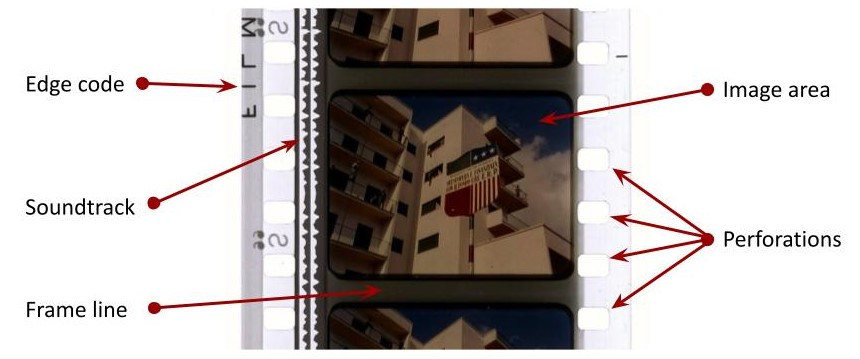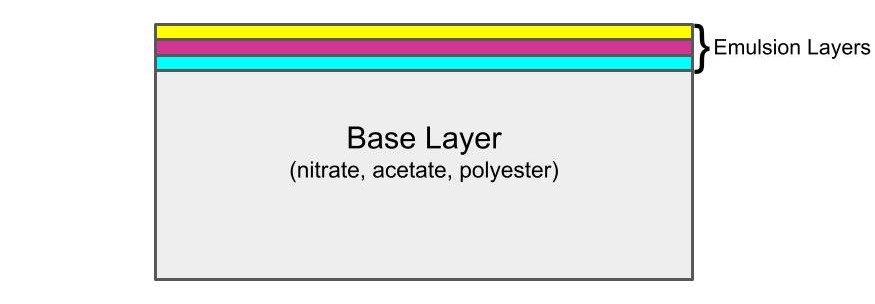
Motion Picture Film Guidance: Important Characteristics of Motion Picture Film Formats
What Are Some Important Characteristics of Motion Picture Film Formats?
Kodak released the first flexible transparent roll film in 1889. Using the new film, technical innovators created cameras and projectors that recorded a series of still images and displayed them to audiences by shining a beam of light through the film and projecting it on a screen. Unlike audio and video formats, which regularly become obsolete as technology moves on, motion picture film has been standardized for over onw hundred years.
The first thing to do when you think you may have a film that needs preservation, is confirm that the object is, in fact, a motion picture film. Over time, the words "film" and "video" have come to be used interchangeably, but they are different media with different preservation needs. When opening a container of film in uncertain condition, lift the lid so that it is facing away from the face to prevent the inhalation of any byproducts of deterioration.
Basic Characteristics of Film:
- A film will usually be in a flat roll, and is likely to be in a plastic or metal can. A film may be on a reel if it was run on a projector in the past.
- There are small holes on one or both sides of the film (called perforations)
- Film is readable to the naked eye. When held up to a light, you will be able to see images on the film. A video requires playback equipment to see any images.

- There are several layers comprising motion picture film. The base and emulsion layers are the most important in determining preservation needs.
Base: The film base is the layer of plastic that supports the images, sound, and other information contained in the emulsion. There are three main types of film bases: nitrate, acetate, and polyester.
- Nitrate: The earliest film stocks used a cellulose nitrate base. Nitrate film is highly flammable, which was why it was never used for the home movie market and was phased out of theatrical production by 1951. Take caution if you suspect that you have nitrate film and follow guidance for proper handling. The inherent danger can be mitigated by proper storage, but it is not recommended that individuals keep this material in their homes.
- Acetate: Cellulose acetate stocks were introduced to the market as early as 1910. Acetate films do not burn like nitrate films, which is why they are referred to as "safety film." Films intended for home use were almost exclusively made with an acetate base. There have been a number of different types of acetate films, all of which have their own preservation issues, but share a common form of base degradation referred to as "vinegar syndrome."
- Polyester: Polyester stocks are more durable than acetate and are not nearly as prone to decomposition. Polyester film stocks were introduced in 1955 and have been used primarily for exhibition prints and preservation purposes.
Emulsion: The emulsion is the part of the film that actually contains the image. The emulsion is composed of gelatin and photo-sensitive materials that, when exposed to light and processed through chemical baths, result in an image. There have been hundreds of different emulsion types in the history of film. You can read more about some of these different films and see images in Identifying Formats and Condition Assessment.
Where can I find more information?
- For more on the difference between film and video, see this blog post from the National Archives and Records Administration (NARA).
- Kodak’s Chronology of Film is a list of Kodak film stocks from 1889 to the present, including stock numbers and information about the characteristics of new products.
- The National Film and Sound Archive of Australia’s Film Preservation Handbook includes more technical detail and diagrams of film layers.
- More information on vinegar syndrome can be found at the National Film Preservation Foundation website.
- The Association of Moving Image Archivists (AMIA) guide, Identifying and Handling Nitrate Film provides guidance on how to identify flammable nitrate stock, and how to handle it safely.

